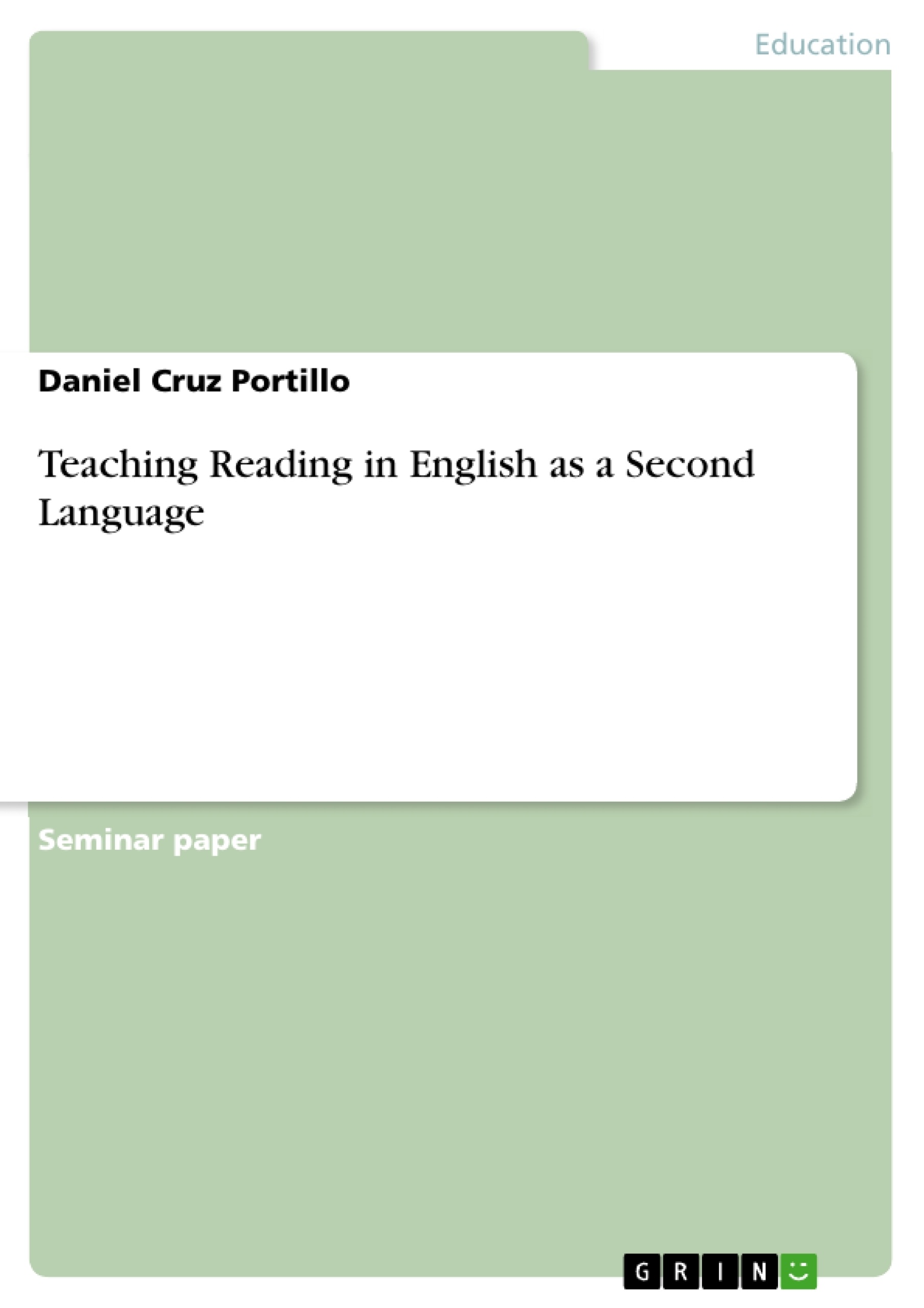Having good reading skills in English as a foreign language is becoming more and more important every day in this globalised world. Wherever you look, no matter on which spot of the world, you will find descriptions and indications in English. In this termpaper I am going to emphasise this necessity and illustrate the reading process from its early beginnings and its purposes and give advice to English teachers, how they can maximise their teaching effectiveness on the basis of linguistic findings.
Inhaltsverzeichnis (Table of Contents)
- 1. Introduction
- 2. Purposes for reading
- 2.1. Reading as a search for simple information
- 2.2 Reading to learn from the text
- 2.3. Reading to integrate information, write and critique texts
- 2.4. Reading for general comprehension
- 3. The main models of how reading occurs
- 3.1. Bottom-up theory
Zielsetzung und Themenschwerpunkte (Objectives and Key Themes)
This text aims to provide a comprehensive overview of the reading process in English as a foreign language (EFL), focusing on the challenges and considerations for EFL teachers. The work outlines different purposes for reading and explores the main models of how reading occurs, highlighting the differences between reading in one's first language and reading in EFL.- The importance of reading skills in an increasingly globalized world
- Different purposes for reading, including information retrieval, learning, and comprehension
- The development of reading theories, including bottom-up, top-down, and interactive models
- The differences between reading in one's first language and reading EFL
- Teaching strategies and considerations for effective EFL reading instruction
Zusammenfassung der Kapitel (Chapter Summaries)
Chapter 1: Introduction
This chapter establishes the context and importance of reading skills, particularly in the English language, for individuals in a globalized society. It highlights the growing demand for strong reading abilities in various aspects of modern life, from professional contexts to everyday interactions.Chapter 2: Purposes for Reading
This chapter delves into different purposes for reading, outlining four distinct categories: reading for simple information, reading to learn from the text, reading to integrate information, write and critique texts, and reading for general comprehension. Each purpose is explained and illustrated with examples, emphasizing the specific skills and strategies required for each reading task.Chapter 3: The Main Models of How Reading Occurs
This chapter introduces the dominant models of reading comprehension, beginning with the bottom-up theory. This theory emphasizes a linear process where meaning is extracted from individual words and phrases and then gradually built up to comprehend the entire text. The chapter also explores the limitations of the bottom-up theory and sets the stage for a discussion of other, more complex models.Chapter 3.1: Bottom-up Theory
This section provides a detailed explanation of the bottom-up theory of reading, highlighting its principles and limitations. It suggests that reading is a mechanical process where meaning is constructed from the smallest units of language (phonemes) to the whole word and then to sentences. It also considers the theory's inability to explain certain reading phenomena, such as the interpretation of context-dependent sentences.Schlüsselwörter (Keywords)
This text focuses on the key areas of reading in English as a foreign language, exploring different purposes for reading, the development of reading theories, and the differences between first language and EFL reading. The core concepts and research areas covered in the text include: reading comprehension, EFL reading instruction, reading theories (bottom-up, top-down, interactive), purposes for reading, decoding, reading strategies, and reading skills.
Final del extracto de 13 páginas
- subir
- Citar trabajo
- Daniel Cruz Portillo (Autor), 2014, Teaching Reading in English as a Second Language, Múnich, GRIN Verlag, https://www.grin.com/document/280890
Leer eBook



